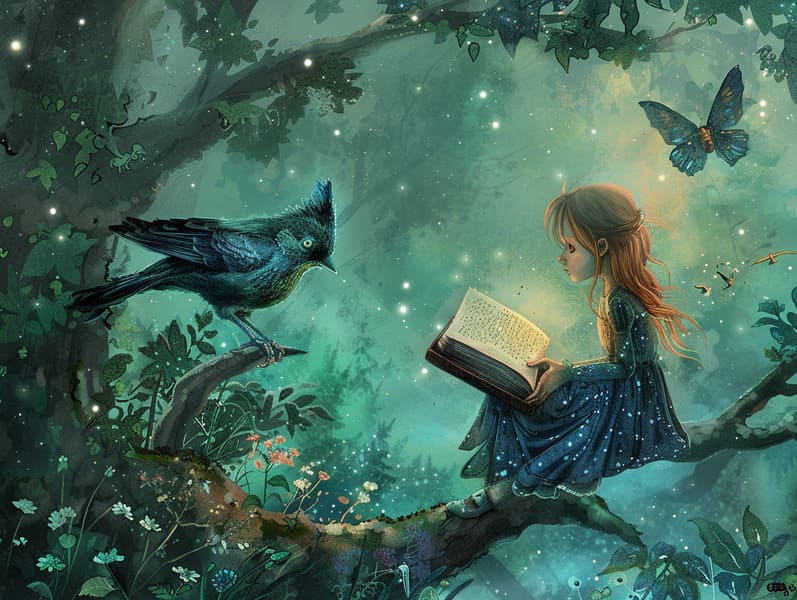The Beginning of Short Fairy Tales with Its Unceasing Splendor.
The Beginning of Short Fairy Tales with Its Unceasing Splendor.
Blog Article

Vintage fairy tales have enduring presence. These stories have been whispered from one generation to the next far before they were ever recorded. They arose from a variety of societies, including Indigenous traditions. They were initially transmitted among elders, often carrying themes and messages concerning the societal norms and beliefs of the time.
The renowned Brothers Grimm, Jacob and Wilhelm (the Grimm brothers), were among the first to collect many of these beloved fairy tales. Their compilation, "Grimm's Fairy Stories," included narratives like "The Little Glass Slipper," "The Bread Crumb Trail," and "Little Snow White," which have since become staples in the world of famous fairy tales. Similarly, Andersen's fantastical fairy tales, such as "The Mermaid's Tale," and "The Duckling that Could," have gained the love worldwide, establishing their place in the pantheon of beloved fairy tales.
Despite their age, traditional fairy tales remain as significant as ever, especially as nighttime stories for kids. These charming stories are now available in many formats, including artistically illustrated books, captivating animations, and digital fairy tales.
Their continued relevance can be credited to several charming aspects:
Important Morals: Old fairy tales often teach important moral lessons. Fairy tales like "The Shepherd Boy and the Wolf" teach the value of being truthful, while "The Tortoise and the Hare" underline the benefits of steadfastness and meekness. These tales offer little ones clear distinctions between correct and incorrect, guiding their moral compass in a kind yet profound way.
Sympathy and Perception: Ancient fairy tales frequently include heroines facing struggles and tests, urging young readers to comprehend with their struggles and support their triumphs. For instance, "The Tale of Beauty and the Beast" emphasizes the significance of seeing beyond looks to recognize the real person of a being, building insight and knowledge.
Cultural Comprehension: Many old fairy tales are deeply ingrained in the cultural contexts from which they blossomed. Delving into these fairy tales can provide intriguing perspectives into different traditions, developing a sense of world insight and awareness.
Fantasy and Innovation: The whimsical elements in old fairy tales—talking animals—invigorate children’s fantasies. These narratives take readers to mythical realms, enlivening imaginative dreams and a sense of marvel that persists a lifetime.
Traditional fairy tales are not only captivating but also educational. They work as bewitching tools in advancing various brain and heart skills in little ones. When fairy tales are spoken, they boost language acquisition by presenting new language and complicated sentence structures. This practice also advances listening abilities and focus, as young ones focus on every detail, expectant to see what happens next.
Furthermore, conversing about the themes and characters of ancient fairy tales can sharpen intellectual skills and problem-solving abilities. Kids are instructed to identify patterns, expect results, and make sense of cause and effect. These deliberations also support the young reveal their thoughts and feelings, promoting their emotional intelligence.
In today’s cyber age, the proliferation of online storybooks has made these fairy tales more available than ever. Online platforms and programs provide large libraries of traditional fairy tales that can be enjoyed or listened via anytime, anywhere. Fairy tales told out loud are particularly liked, offering an captivating way for young readers to appreciate these charming stories. Sound books and read-to-me videos move characters and settings to life, often joined by enchanting musical scores and background music that boost the tale journey.
The lasting appeal of ancient fairy tales lies in their ability to shift to current eras while maintaining their central messages. Contemporary updates of these fairy tales often present more varied protagonists and modern settings, making them relevant to today’s audience. However, the central morals of fortitude, warmth, and honesty remain unchanged, continuing to strike a chord with young listeners of all ages.
Timeless fairy tales also offer a sense of solace and homeliness. They afford a neat narrative with a definite beginning, middle, and end, often winding up with the conclusion of conflicts and the triumph of virtue over wickedness. This constancy can be solacing for kids, affording a sense of solidity in an inconstant world.
Classic fairy tales continue to mesmerize and coach new generations, maintaining their appeal and pertinence in modern society. As kids' bedtime tales, they render accessible a perfect blend of delight and instruction, furthering moral values, empathy, and creativity. The accessibility of internet fairy tales and the commonness of fairy tales narrated ensure that these old tales remain acquirable to new generations.
By maintaining and spreading these stories, we continue to celebrate the rich tapestry of tradition and cultural heritage. Whether you are experiencing a colorful picture book, enjoying a digital library, or hearing an narrated book, the beauty of classic fairy tales is always within reach. These tales highlight of the unceasing magic of tales and its ability to connect us awesome site across eras and regions.
Regardless if you are discovering a vividly illustrated book, browsing a digital collection, or listening through an read-aloud book, the beauty of famous fairy tales is always within reach.
These narratives highlight of the continued influence of narratives and its ability to bring us together across epochs and places, casting a charm that delights and instructs alike.